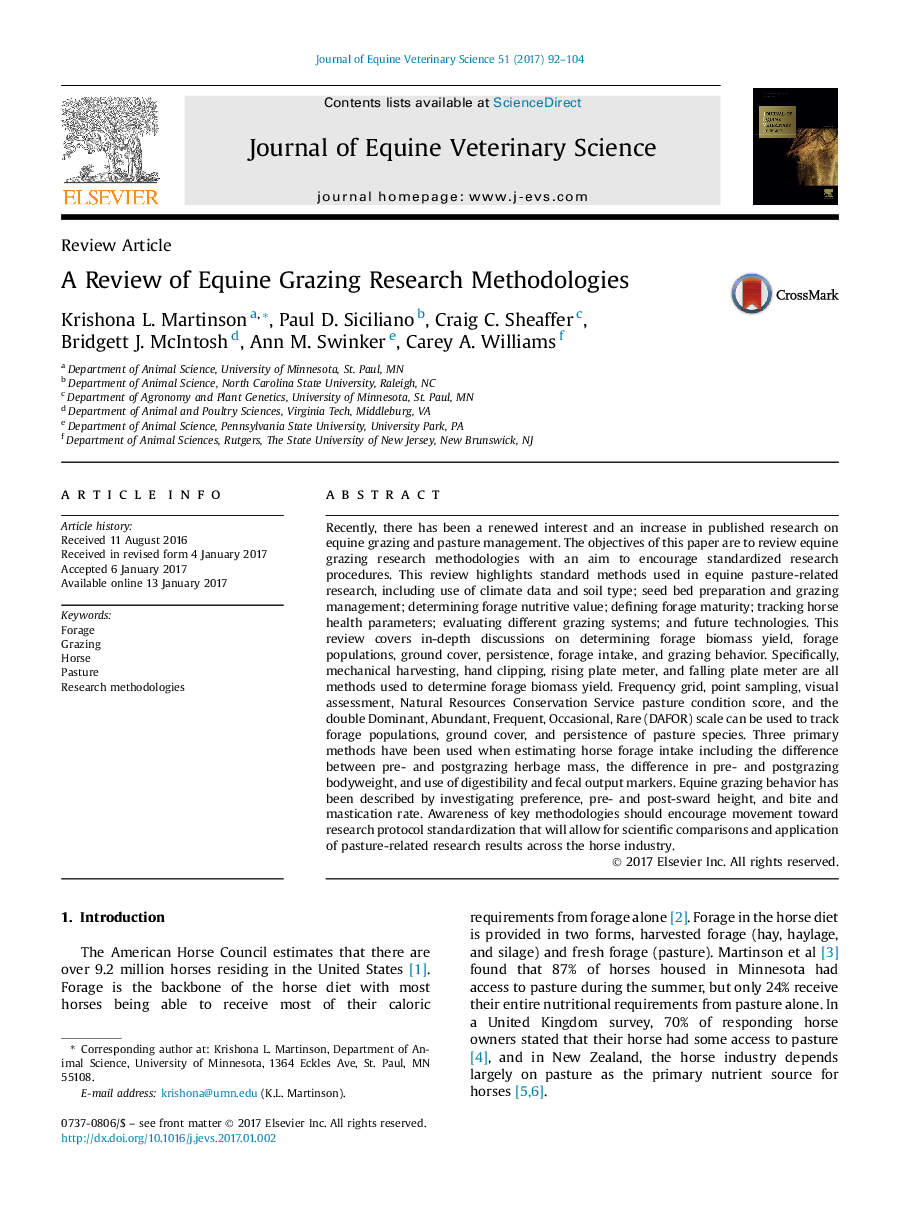| کد مقاله | کد نشریه | سال انتشار | مقاله انگلیسی | نسخه تمام متن |
|---|---|---|---|---|
| 5535427 | 1551549 | 2017 | 13 صفحه PDF | دانلود رایگان |

- The objectives of this paper are to review equine grazing research methodologies.
- The goal is to encourage movement toward research protocol standardization.
- Forage yield, ground cover, persistence, intake, and behavior are discussed.
- Forage maturity, horse health, and different grazing systems are also discussed.
Recently, there has been a renewed interest and an increase in published research on equine grazing and pasture management. The objectives of this paper are to review equine grazing research methodologies with an aim to encourage standardized research procedures. This review highlights standard methods used in equine pasture-related research, including use of climate data and soil type; seed bed preparation and grazing management; determining forage nutritive value; defining forage maturity; tracking horse health parameters; evaluating different grazing systems; and future technologies. This review covers in-depth discussions on determining forage biomass yield, forage populations, ground cover, persistence, forage intake, and grazing behavior. Specifically, mechanical harvesting, hand clipping, rising plate meter, and falling plate meter are all methods used to determine forage biomass yield. Frequency grid, point sampling, visual assessment, Natural Resources Conservation Service pasture condition score, and the double Dominant, Abundant, Frequent, Occasional, Rare (DAFOR) scale can be used to track forage populations, ground cover, and persistence of pasture species. Three primary methods have been used when estimating horse forage intake including the difference between pre- and postgrazing herbage mass, the difference in pre- and postgrazing bodyweight, and use of digestibility and fecal output markers. Equine grazing behavior has been described by investigating preference, pre- and post-sward height, and bite and mastication rate. Awareness of key methodologies should encourage movement toward research protocol standardization that will allow for scientific comparisons and application of pasture-related research results across the horse industry.
Journal: Journal of Equine Veterinary Science - Volume 51, April 2017, Pages 92-104